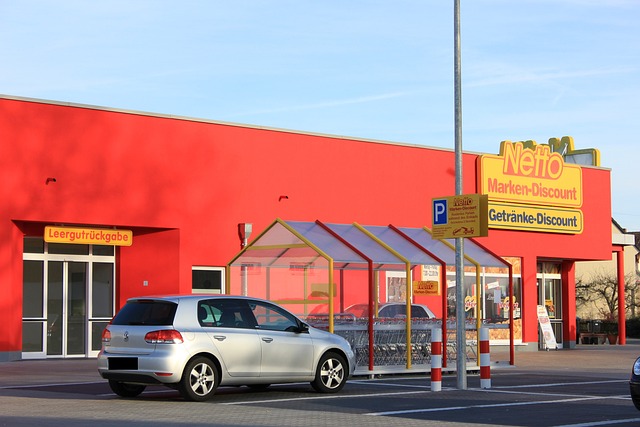In Karachi's vibrant air travel market, dynamic pricing has become a dominant strategy. Airlines adjust ticket prices based on real-time demand, availability, and local trends using advanced algorithms. During peak seasons, prices rise due to high demand, while off-peak discounts attract bookings. This system benefits both carriers by maximizing revenue and travelers by offering flexible deals. However, it presents challenges like price fairness and inequality, as dynamic pricing can cause unpredictable cost swings. Karachi's aviation industry leverages data analytics, personalized promotions, and evolving market dynamics for a responsive booking experience.
“Unraveling the complexities of dynamic pricing in air travel, particularly within the vibrant metropolis of Karachi, this article offers a comprehensive guide. We explore the concept, its operational mechanics, and the factors driving price fluctuations. From benefits like efficient resource allocation to challenges such as consumer perception, we delve into the impact on both airlines and passengers. Furthermore, we gaze into the future, predicting trends that could shape dynamic pricing in Karachi’s ever-evolving aviation landscape.”
- What is Dynamic Pricing in Air Travel?
- How Does Dynamic Pricing Work in Karachi?
- Factors Influencing Price Changes
- Benefits of Dynamic Pricing for Airlines and Passengers
- Challenges and Criticisms of Dynamic Pricing
- Future Trends in Dynamic Pricing for Air Travel in Karachi
What is Dynamic Pricing in Air Travel?

Dynamic pricing in air travel refers to the practice of fluctuating ticket prices based on real-time demand, availability, and market conditions. Unlike static pricing, where rates remain consistent, dynamic pricing allows airlines to adjust prices rapidly. In Karachi, for instance, this strategy has become increasingly common as the city’s airport handles a high volume of passengers seeking flexible travel options. By leveraging sophisticated algorithms and data analytics, airlines can offer lower fares during periods of low demand and increase prices when demand surges, ensuring optimal revenue management.
How Does Dynamic Pricing Work in Karachi?

In Karachi, dynamic pricing in air travel is a complex yet fascinating process that adapts to various market factors. This system closely monitors demand and adjusts ticket prices accordingly, ensuring a balanced and profitable strategy for airlines operating from Karachi International Airport (KIA). When demand for flights is high, prices tend to rise, reflecting the increased competition for available seats. Conversely, during off-peak times or when there’s excess capacity, prices drop to encourage bookings.
Karachi’s dynamic pricing model also considers local economic trends and seasonal variations. For instance, business travel patterns in Karachi can significantly impact flight prices during peak workweeks. Additionally, holiday seasons and special events often lead to price fluctuations as travelers from across the globe visit the vibrant city. This adaptable pricing strategy not only benefits airlines by maximizing revenue but also offers travelers flexible options, ensuring they secure the best deals at the right time.
Factors Influencing Price Changes

Dynamic pricing in air travel is a complex process influenced by various factors unique to each flight and destination, including Karachi. One key element is demand; prices tend to rise during peak seasons or when flights are nearly full, while they drop when seats remain unfilled. This supply-and-demand equilibrium plays a significant role in shaping ticket costs.
Another crucial factor is competition. In markets like Karachi, where multiple airlines operate, carriers often adjust prices based on competitors’ offerings. They may increase rates if there’s limited competition or decrease them to attract more customers when several airlines are vying for business. Additionally, external factors such as fuel prices, airport fees, and exchange rates can significantly impact airfares, leading to fluctuations even within the same day.
Benefits of Dynamic Pricing for Airlines and Passengers

Dynamic pricing in air travel offers a win-win situation for both airlines and passengers. For airlines, it’s a powerful tool to optimize revenue by adapting ticket prices based on real-time demand and market conditions. This strategy allows carriers to fill seats more efficiently, especially during peak seasons or events in popular destinations like Karachi, where flight frequencies may vary. By adjusting prices promptly, airlines can maximize their profits while maintaining competitiveness.
Passengers benefit from this system as they often secure lower fares when booking at the right time. Dynamic pricing encourages travelers to be flexible with their travel dates and times, leading to better value for money. This flexibility benefits those who are price-conscious or have more spontaneous travel plans, ensuring they get a fair deal on airfare without compromising on their travel experience.
Challenges and Criticisms of Dynamic Pricing

Dynamic pricing in air travel, while offering numerous benefits like optimizing capacity and revenue, faces several challenges and criticisms. One major issue is its potential to create a perception of unfairness among passengers. Prices that fluctuate constantly can be confusing and frustrate travelers, especially when they feel they are being charged exorbitantly for the same ticket based on ever-changing algorithms. This dynamic pricing strategy has been criticized for adding an element of unpredictability and uncertainty to air travel costs in cities like Karachi, where price swings might be more pronounced due to varying demand patterns.
Furthermore, dynamic pricing can exacerbate existing inequalities. Frequent flyers who are adept at tracking price changes may gain an advantage, while casual travelers or those less tech-savvy could end up paying higher prices. This raises concerns about accessibility and fairness in air travel, especially for those living in diverse economic environments like Karachi’s, where a wide range of income levels coexist.
Future Trends in Dynamic Pricing for Air Travel in Karachi

In the dynamic world of air travel, Karachi is not immune to evolving pricing strategies. Future trends in dynamic pricing for air travel in Karachi are set to be influenced by several key factors. Advanced algorithms and machine learning will play a pivotal role in predicting demand patterns more accurately, allowing airlines to adjust prices in real-time. Personalization is another significant trend; using customer data, airlines can offer tailored price promotions, enhancing the user experience.
Furthermore, with an increasing focus on sustainability, carbon taxes and green initiatives might impact ticket pricing. As Karachi’s aviation sector becomes more competitive, dynamic pricing will need to adapt to changing market dynamics, consumer behavior, and regulatory frameworks. This ensures that passengers in Karachi can expect a more flexible and responsive pricing environment when booking their flights.
Dynamic pricing in air travel, as evidenced in Karachi’s market, offers a sophisticated approach to fare optimization. By leveraging data-driven strategies and adapting prices based on demand and other factors, airlines can maximize revenue while providing passengers with competitive rates at opportune times. While challenges and criticisms persist, the benefits of dynamic pricing—including increased efficiency, improved passenger experience, and enhanced airline profitability—suggest a promising future for this trend in Karachi and beyond. As technology advances, we can expect to see even more innovative applications of dynamic pricing, shaping the way people explore the world.

Leave a Reply
You must be logged in to post a comment.